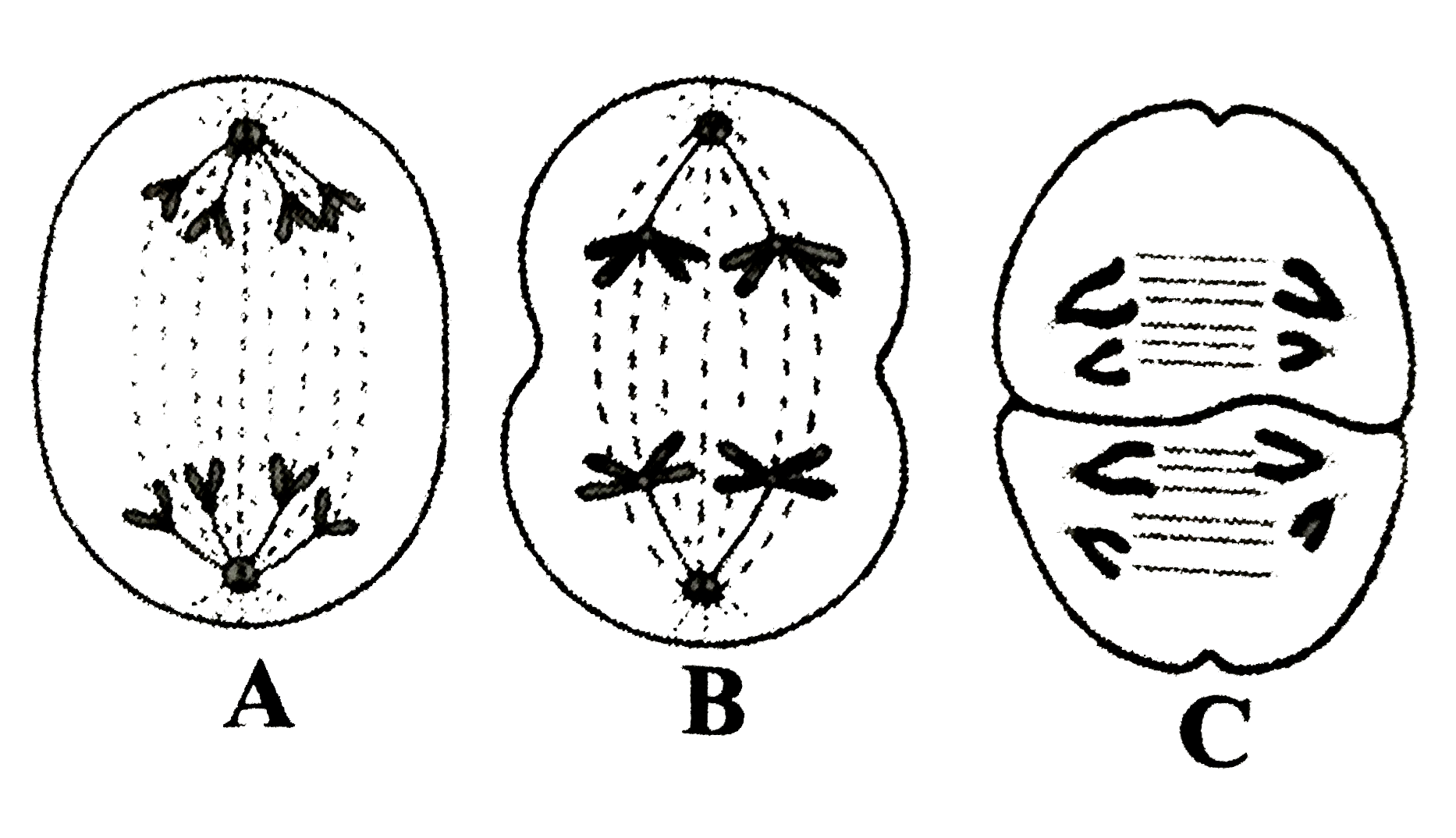Distinguish anaphase of mitosis from anaphase I of meiosis.
To distinguish between anaphase of mitosis and anaphase I of meiosis, we can follow these steps:
1. Definition of Anaphase:
- Anaphase is a stage in both mitosis and meiosis where chromosomes are separated and pulled towards opposite poles of the cell.
2. Anaphase of Mitosis:
- In mitosis, during anaphase, the centromeres of the chromosomes split.
- This splitting allows the sister chromatids (the two identical halves of a duplicated chromosome) to separate and move towards opposite poles of the cell.
- Thus, at the end of anaphase in mitosis, each pole of the cell receives an identical set of chromosomes.
3. Anaphase I of Meiosis:
- In contrast, during anaphase I of meiosis, the centromeres do not split.
- Instead, homologous chromosomes (each consisting of two sister chromatids) are separated and pulled to opposite poles.
- The sister chromatids remain attached at their centromeres throughout this phase.
4. Key Differences:
- Centromere Behavior: In mitosis, centromeres split; in meiosis I, they do not.
- Chromatid Separation: In mitosis, sister chromatids separate; in meiosis I, homologous chromosomes separate while sister chromatids remain together.
5. Conclusion:
- The main distinction lies in the behavior of the centromeres and the separation of chromatids versus homologous chromosomes.
Summary of Differences:
- Mitosis Anaphase: Centromeres split, sister chromatids separate.
- Meiosis I Anaphase: Centromeres do not split, homologous chromosomes separate, sister chromatids remain attached.
- Anaphase is a stage in both mitosis and meiosis where chromosomes are separated and pulled towards opposite poles of the cell.
- In mitosis, during anaphase, the centromeres of the chromosomes split.
- This splitting allows the sister chromatids (the two identical halves of a duplicated chromosome) to separate and move towards opposite poles of the cell.
- Thus, at the end of anaphase in mitosis, each pole of the cell receives an identical set of chromosomes.
- In contrast, during anaphase I of meiosis, the centromeres do not split.
- Instead, homologous chromosomes (each consisting of two sister chromatids) are separated and pulled to opposite poles.
- The sister chromatids remain attached at their centromeres throughout this phase.
- Centromere Behavior: In mitosis, centromeres split; in meiosis I, they do not.
- Chromatid Separation: In mitosis, sister chromatids separate; in meiosis I, homologous chromosomes separate while sister chromatids remain together.
- The main distinction lies in the behavior of the centromeres and the separation of chromatids versus homologous chromosomes.
- Mitosis Anaphase: Centromeres split, sister chromatids separate.
- Meiosis I Anaphase: Centromeres do not split, homologous chromosomes separate, sister chromatids remain attached.
Topper's Solved these Questions
Similar Questions
Knowledge Check
During anaphase I of meiosis
AHomologous chromosomes separate,BNon-homologous autosomes separate,CSister chromatids,DNon-sister chromatids separate.If 2n=4, then identify the figures A,B and C, as per the following codes and select the correct option

Anaphase of meiosis I=(i)
Anaphase of mitosis =(ii)
Anaphase meiosis II =(iii)Aii,i,iiiBiii,ii,iv,iCi,ii,iiiDiii,i,ii
Identify the stage shows in the figure and select the correct option

(a) A-Late prophase , B-Anaphase , C-Telophase , D-Prophase
(b) A-Late prophase, B - Metaphase of mitosis, C- Prophase I of meiosis, D-metaphase I of meiosis
(c) A-Late prophase, B - Metaphase of mitosis, C- Metaphase I of meiosis, D-Prophase I of meiosis
(d) A - Metaphase , B - Anaphase, C - Telophase, D - Prophase I of meiosis
View SolutionIn Anaphase-I
View SolutionMetaphase and anaphase of mitosis
View SolutionGive significance of mitosis and meiosis.
View SolutionMitotic anaphase differs from metaphase in possessing
View SolutionMitotic anaphase differs from metaphase in possessing
View Solution
